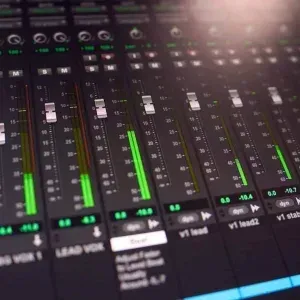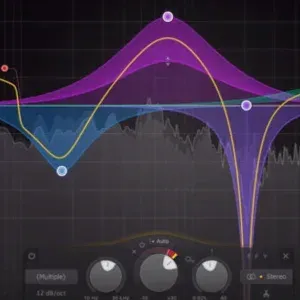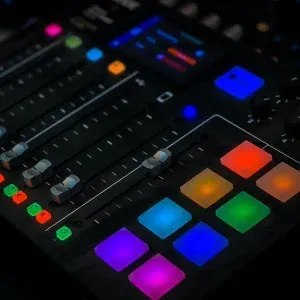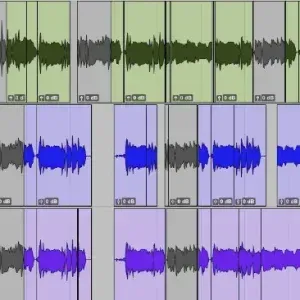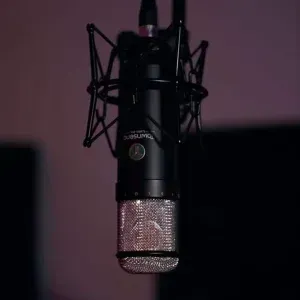ATTENTION: ARTISTS & PODCASTERS IN St. Louis
St. Louis Recording Studio Vivid Core Music
Create Your Signature Sound Today With Professional Recording Services
Let's Elevate Your Music or Podcast the Right Way!
Not only do we excel in music, we produce exceptional quality podcasts as well!
THE RECORDING STUDIO
What Makes Vivid Core Music the Top Recording Studio in St. Louis?
We Offer An Unmatched, Comfortable, Focused Atmosphere for Creativity & Inspiration

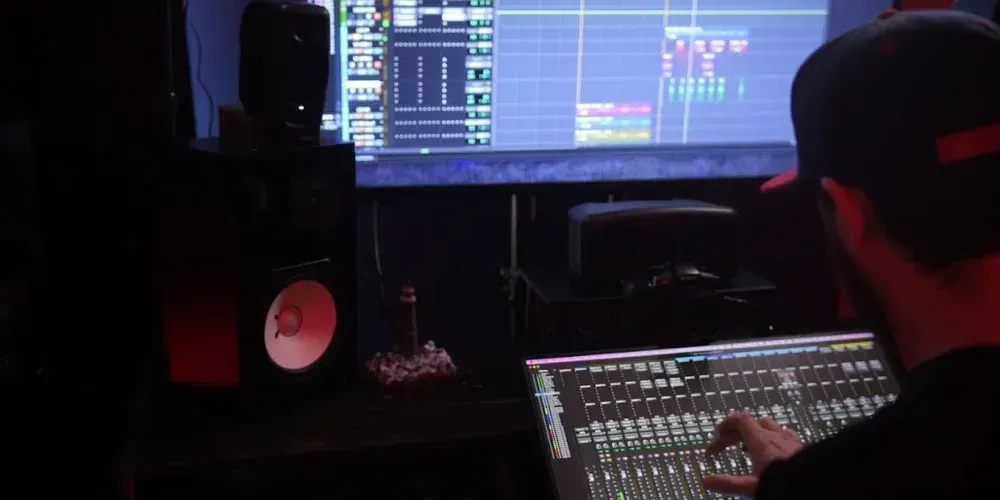
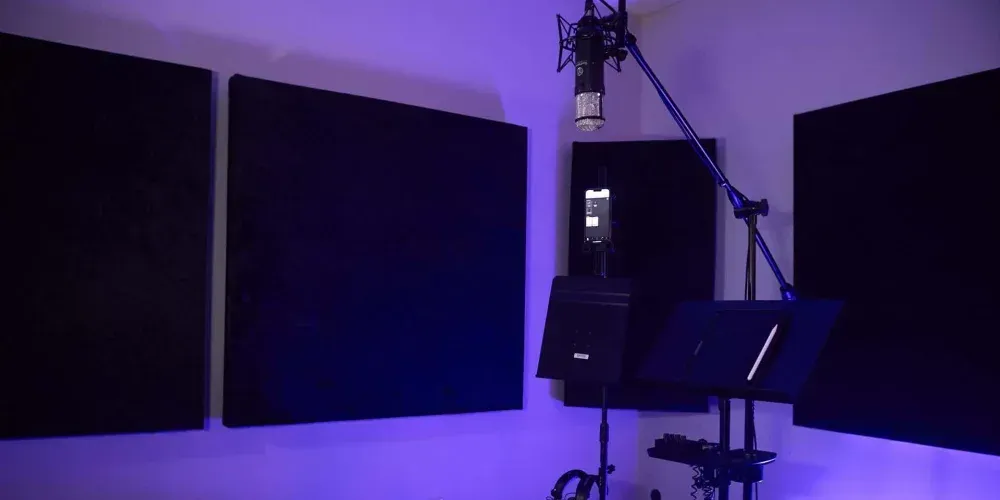
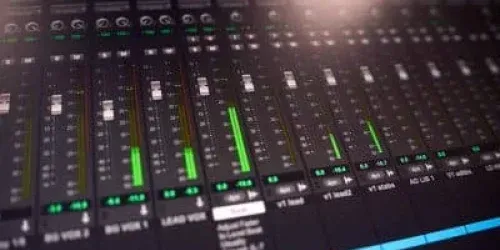
Our Dolby Atmos Certified control room features premium recording studio gear like Universal Audio Apollos, Avid S1, ProTools Ultimate, and Grace Design Monitor Controller, ensuring top-notch quality with Adam Audio A7x and NS-10s monitors. This is the caliber of equipment you should expect from professional recording studios; however, the engineers in the driver's seat matter most! Meanwhile, our acoustically treated recording booth offers an ideal space equipped with a confidence screen, high-quality microphone, comfortable headphones, ample space, and customizable lighting for the perfect ambiance.
READY TO BOOK STUDIO TIME?
THE ENGINEERS
Who Are The Engineers Behind Your Sound?
We have a team of highly skilled and experienced engineers who are committed to unlocking the full potential of your music. We take pride in offering top-notch audio engineering services tailored to your unique requirements. Our combined expertise aims to elevate your sound to new heights, ensuring that your music is dynamic, captivating, and truly resonates with your audience.
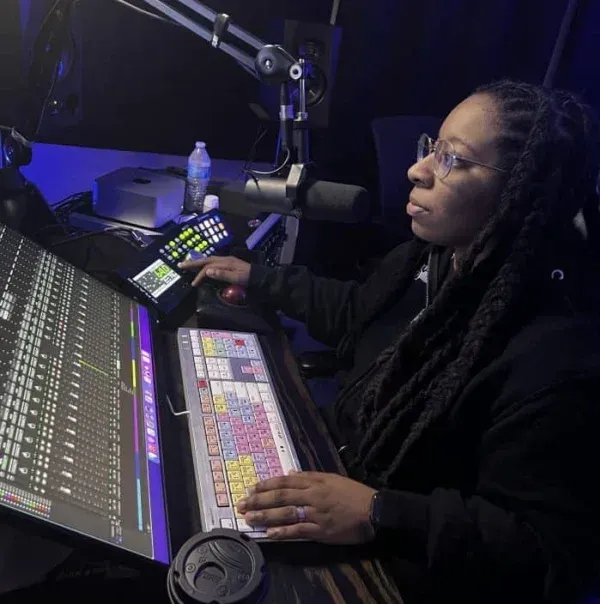
Tarcea Renee - Lead Audio Engineer
Tarcea Renee, a St. Louis native, is an established audio engineer and GRAMMY-considered artist with over a decade of experience. She has worked with numerous artists in the recording studio, providing end-to-end production services, including recording, mixing, post-production, and mastering. Tarcea’s music-industry expertise and passion for creating music ensure the highest quality results for every project.
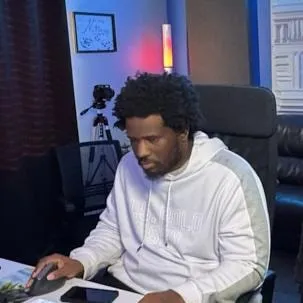
Til' December - 2nd Audio Engineer
Til December brings his extensive knowledge and musical background to Vivid Core Music. With 2x Platinum credits and production work with artists like Joe Moses, Nohemy, and Elektor, Til has years of experience working across various genres from his base between Los Angeles and St. Louis. His proven track record and diverse music production skill set make him a valuable asset in the recording, mixing, and mastering processes at Vivid Core.
If you're used to home recording, consider the challenges of workload and achieving desired sound quality without professional expertise and equipment. If you're in St. Louis and searching for recording studio close to me or the best music recording studios near me, you can simply book time with us, see exactly how we're different from other Saint Louis studios, and be as creative as you are, while we help you make your best music!
For musicians accustomed to home recording, transitioning to a professional studio can represent both an exciting opportunity and a set of new challenges. While home studios offer convenience and familiarity, they often fall short in delivering the high-quality sound that artists aspire to achieve. The limitations of personal equipment, along with the inherent learning curve of audio engineering, can lead to frustration, especially when producers are striving for that polished, studio-quality sound. It's important to recognize how professional expertise can make a significant difference, from the technical know-how of capturing the perfect take to the nuanced mixing and mastering techniques that elevate a track from good to extraordinary.
For those located in St. Louis and searching recording studio close to me online, the process of finding a space that envelops creativity while providing top-notch facilities is simpler than it seems. When you choose to book time at a studio that prioritizes both artistic expression and sound quality, you're opening the door to a host of possibilities. Our studio stands apart from other Saint Louis options by combining state-of-the-art technology with a collaborative environment, ensuring that artists can unleash their full creative potential. Whether it's the warmth of analog equipment or the precision of digital recording, we are dedicated to helping musicians realize their vision, all while delivering a seamless recording experience that enhances their artistry.
Experience Top-Tier Recording Services at Vivid Core Music
Our veteran audio engineers deliver precise recording and mixing services in the studio. Clients enjoy 5-star content creation services supported by skilled engineers.
At Vivid Core Music Studio, we offer top-of-the-line studio services and a comfortable environment for all your recording, mixing, mastering, and editing needs! With our state-of-the-art equipment and expertise, we are confident that we can help you achieve your desired sound.
Our studio offers a professional setting where artists work with state-of-the-art software and high-quality equipment, including a top-grade microphone and innovative Dolby Atmos systems.
For those searching "recording studio near me" in St. Louis, Vivid Core Music provides an unmatched atmosphere for creativity and inspiration—we provide a friendly space that fosters collaboration and supports both novice and experienced creatives working in music studios and recording studio setups. In a world where creativity thrives on the right environment, this studio stands out as a beacon for artists seeking both inspiration and cutting-edge technology. With its professional setting, the studio is equipped with state-of-the-art software and high-quality equipment, including top-grade microphones and innovative Dolby Atmos systems. These advanced tools not only enhance the audio quality but also provide artists with the freedom to experiment and push the boundaries of their creativity. The integration of Dolby Atmos technology allows for a truly immersive sound experience, catering to the needs of contemporary musicians and sound engineers who are looking to elevate their projects to new heights.
Beyond the advanced technology, the studio prides itself on creating a welcoming atmosphere that encourages collaboration and connection among artists. Whether novice or seasoned professionals, creatives find themselves supported in a space designed for exploration and innovation. For musicians who have been searching "recording studio near me," this studio recognizes the importance of fostering a community where ideas can flow freely, providing a nurturing environment that empowers artists to hone their craft. By combining sophisticated equipment with a friendly and inspiring setting, the studio not only meets the technical needs of its clients but also cultivates an unmatched atmosphere that truly enhances the creative process.
Our facility is strategically positioned in the heart of St. Louis to serve musicians and podcasters throughout the region. When local artists search for a "recording studio near me," they'll discover we're located directly across from the airport, offering unparalleled accessibility that allows local talent to reach our studio within 20 minutes from virtually anywhere in the city.
Location convenience is fundamental to optimizing the creative process. Our prime positioning reduces travel time by approximately 30% compared to other area studios, making us the ideal choice for anyone searching "recording studio near me" in the St. Louis area. This enables artists to dedicate more energy to their craft. Whether you're recording a new track, developing podcast content, or refining your artistic vision, this efficiency translates directly into enhanced productivity and creative output. By minimizing logistical barriers, we foster a vibrant artistic community where collaboration thrives. Our commitment to accessibility reflects our core mission: supporting and elevating artists across St. Louis by removing obstacles that stand between talent and creation. When artists spend less time traveling and more time creating, the entire creative community benefits.
Take the First Step Towards Creating Your Sound Today — Book your session with us and experience the reliable expertise of a seasoned sound recording studio with engineers who care about each artist's journey.
Check Out Our St. Louis Music & Studio Blog
Discover Our Premier Recording Studio in STL Today!
Find the best recording studios in STL for your next project. Professional facilities with cutting-edge equipment await you. Unleash your creativity today! ...more
Studio Blog
July 10, 2025•15 min read
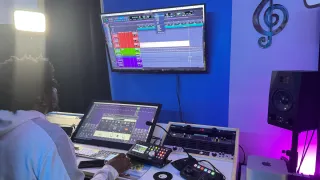
Experience Professional Sound at a Music Studio Near Me
Uncover the finest music studio nearby for creative projects. ...more
Studio Blog
July 07, 2025•13 min read
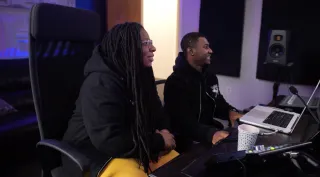
St. Louis Recording Studios: A Musician’s Dream Space
Find the best St. Louis recording studios for your next project. Our guide covers top-rated options. ...more
Studio Blog
June 19, 2025•11 min read

REVIEWS BY CUSTOMERS
Success Stories From Satisfied Artists & Podcast Clients
Book a Session Today & Experience the Difference We Can Make!
If you're ready to take your music to the next level, go ahead and Book Your Studio Time. Whether you're an aspiring artist or an established musician searching for a "music studio near me," Vivid Core Music is here to support you on your artistic journey. We're the only non-profit recording studio out of all the St. Louis recording studios. Let's work together to amplify your music and make an impact!
If you're an artist seeking to elevate your musical expression, booking studio time can be a transformative step on your artistic journey. For those searching "music studio near me" in the St. Louis area, Vivid Core Music stands out in the vibrant St. Louis music scene as the only non-profit recording studio, dedicated to providing a supportive environment for both aspiring and established musicians alike. By choosing to record at Vivid Core Music, artists can take advantage of professional-grade facilities and equipment without the overwhelming financial burden often associated with commercial studios. This unique structure allows for a more accessible approach to music production, enabling artists to focus more on their creativity and less on costs.
Vivid Core Music is committed to amplifying voices and fostering artistic collaborations that resonate with audiences. By working together, artists can tap into a wealth of resources, industry knowledge, and guidance from experienced professionals. Whether you are looking to lay down a demo, produce an album, or simply explore new sounds, Vivid Core Music is prepared to support your musical journey. The studio's mission goes beyond just recording; it emphasizes making a meaningful impact in the community through music. By booking your studio time here, artists not only invest in their craft but also contribute to a larger vision that nurtures creativity and connection within the St. Louis music community.

4433 Woodson Road, St. Louis, MO. 63134 - Suite 240
Call Us at (314)-916-4450
Copyright 2025. Vivid Core Music. All Rights Reserved.

